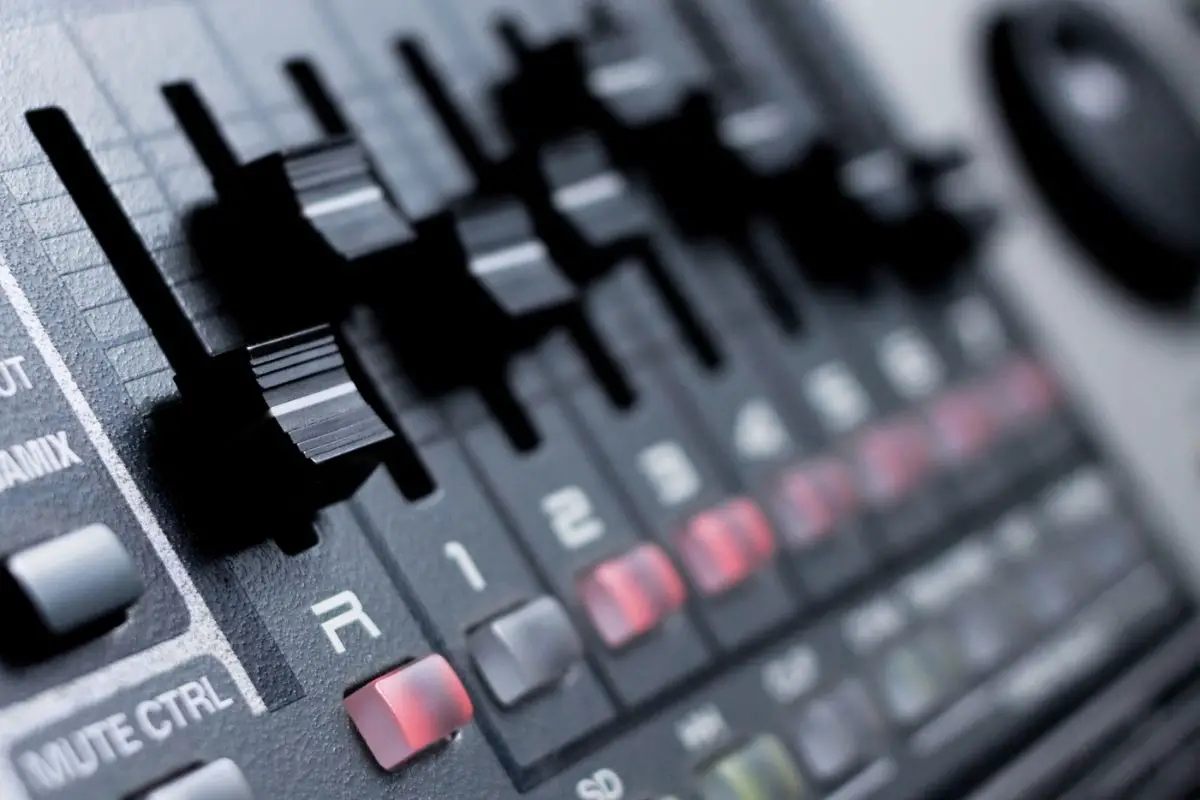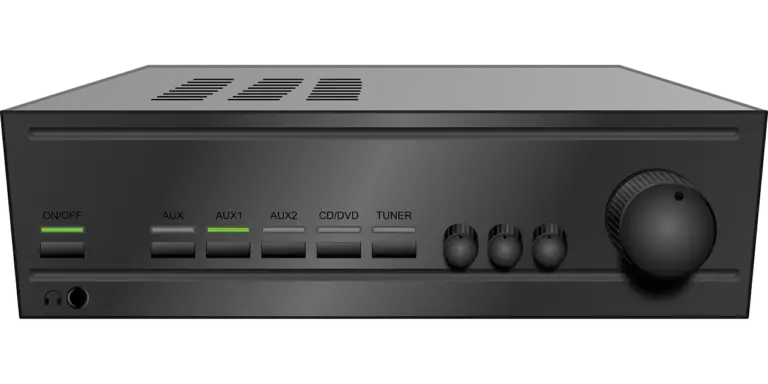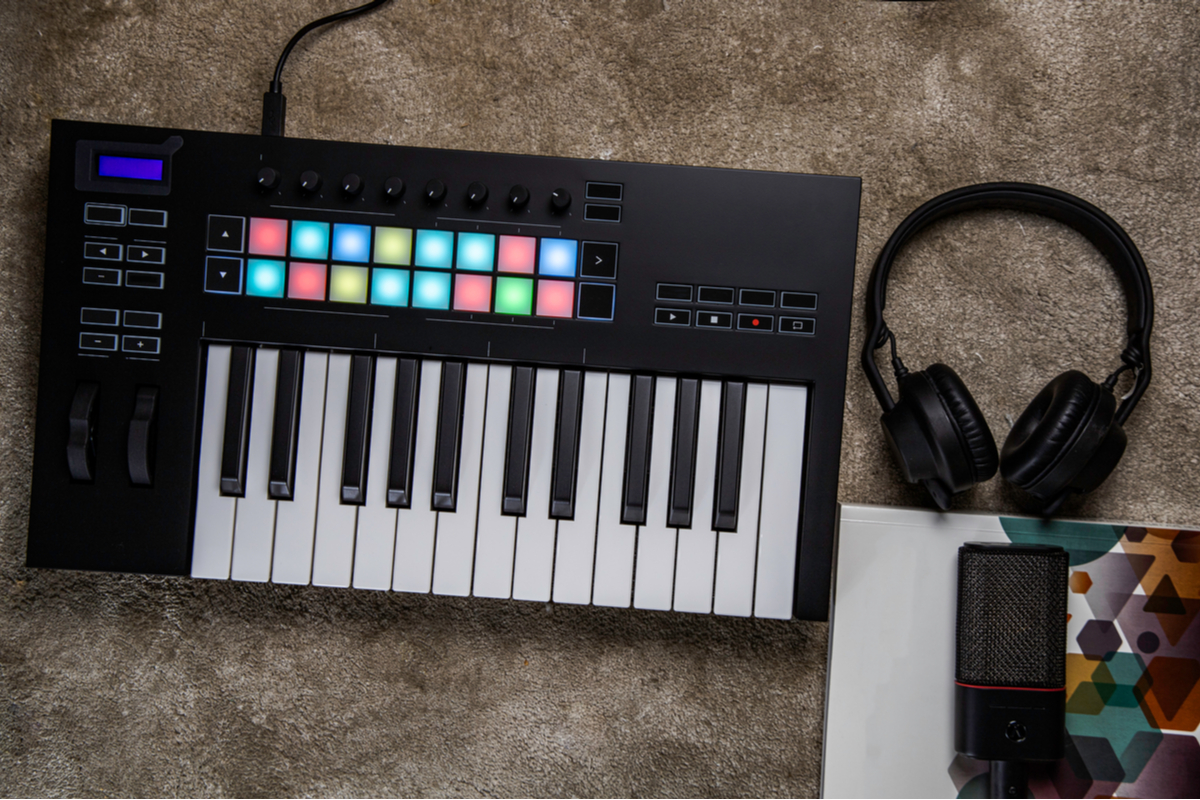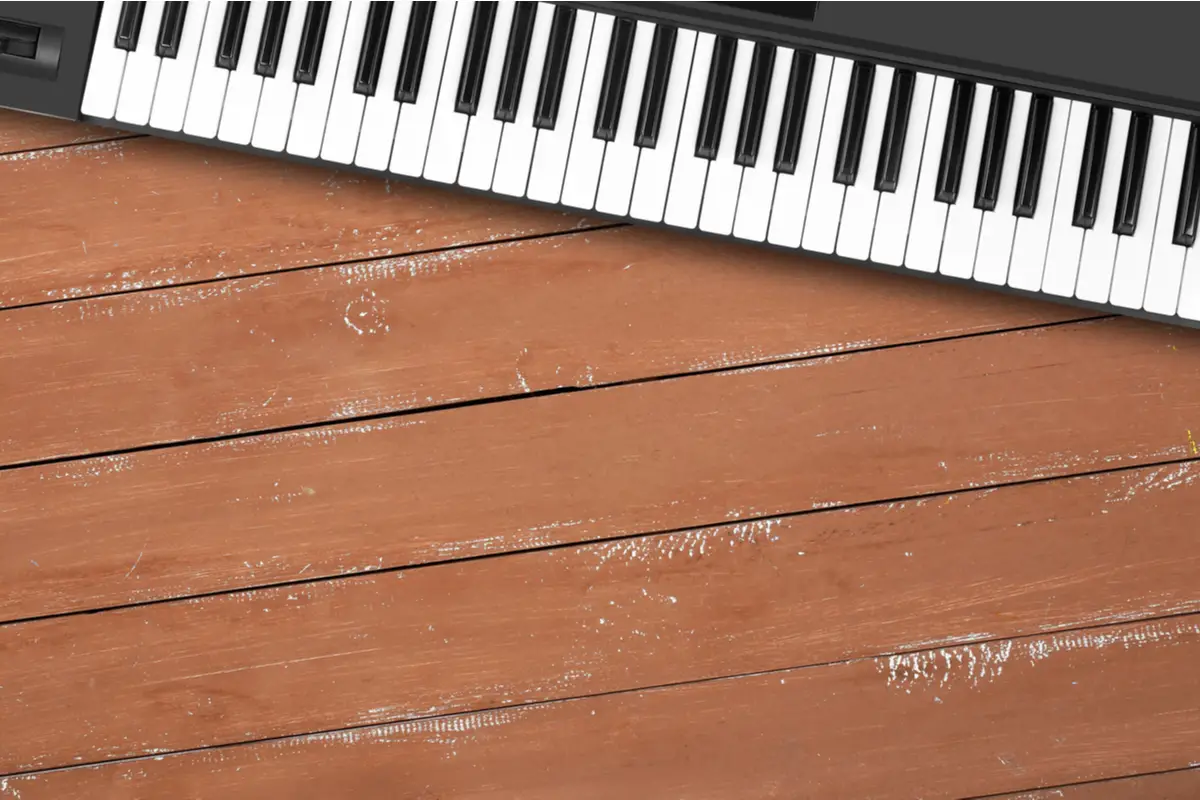Best Overhead Drum Mics for Musicians
If you’ve ever tried to use a multi-piece microphone kit to record or amplify your sounds, you’ll know there’s room for improvement. Perhaps your cymbals sound brittle, or your drums sound detached, and this will not do you ANY favors.
If you’re fed up and feeling at a loss, it might be time for some new overhead drum mics.
If you want a decent mic set that can capture your whole kit and provide a better reference point for mixing your drums, we’ve got you covered.
Plus, if you’re making the investment, why not make sure your microphones are versatile? Many of the options on our list would be suitable for acoustic and woodwind instruments, as well as your standard drum kit.
Choosing a new set doesn’t have to be a headache. If you’re not sure where to start or what to look for, stick with us to check out the best overhead drum mics on the market.
We’ve got everything from big names, matching mics, cardioids, and more.
Best Overhead Drum Mics (Quick Summary)
1. Audio-Technica AT2021 Cardioid Condenser Microphone
- Condenser design for studio-quality vocal and instrument applications; ideal for acoustic guitar, overheads, piano and group vocals
- Excels in high-SPL applications with extended response for smooth, natural sonic characteristics
- Low-mass element for superb transient response
- Corrosion-resistant contacts from gold-plated XLRM-type connector
- Rugged design and construction for reliable performance
First on our list is the Audio-Technica Cardioid Condenser Microphone.
The cardioid design of these microphones reduces the pickup of external sounds from the sides and rear, so you can isolate your desired tones and improve the quality of your sound source.
The AT2021 has a frequency response of 30-20,000 Hz, wired technology, and an undirected polar pattern.
This microphone would be ideal for producing studio-quality sound, not just for drums but also for pianos, acoustic guitar, and group vocals.
Its noise floor is incredibly impressive. The noise floor isn’t everything for mics, but if you’re after a microphone that produces minimal sound from the device itself, the AT2021 is a superb choice.
This mic is small, has good value for money, has a sensitive, wider, and flatter frequency than other high-quality microphones.
We recommend using over one mic for the best results. This mic produced a large amount of distortion during testing, as it struggles with too much air moving near it.
If you keep your distance from the source, your sound should be clearer.
This mic has a low-mass element to give a stellar transient response. Its solid construction is reliable and appealing. So there’s no need to worry about build quality with this mic.
Pros
- Quality Construction: This microphone has a high-quality build which improves sound quality and offers peace of mind against wear and tear.
- Excellent Noise Floor: The AT2021 has a great noise floor. The microphone produces minimal noise, giving you a much clearer sound quality.
Cons
- Distortion Issues: You may generate some unwanted distortion if you don’t have enough distance between the mic and your drum.
2. LyxPro SDPC-2 Stereo Microphone Pair
- PRO-GRADE PENCIL CONDENSER MICROPHONES : Capture the finest audio details with the LyxPro SDPC-2 stereo pair, ideal for overheads, acoustic, and woodwind instruments.
- CUSTOMIZE PICKUP PATTERNS : Three interchangeable capsules Omni, Cardioid, and Super Cardioid, allow you to tailor the pickup pattern to your needs, enhancing versatility for different recording situations.
- PRECISE AUDIO CAPTURE : The stereo pair accurately captures even the Slightest subtlest nuances, ensuring high-quality recordings that faithfully reproduce the original sound.
- EXPANSIVE FREQUENCY RESPONSE : With a frequency response of 30Hz-18kHz; Sensitivity of -38dB ± 3dB (0dB=1V/Pa at 1kHz) these microphones deliver a wide range of frequencies, enabling detailed audio reproduction across various instruments and genres.
- BONUS ACCESSORIES INCLUDED : Enjoy added value with two windscreens, an aluminum carrying case, and two smooth-tilt microphone clips, making this comprehensive package the ultimate choice for professional recording.
Next up, we have the LyxPro SDPC-2 microphone pairs. These stereo microphones offer real bang for your buck and come packed full of features.
Each microphone has custom-fitted foam windscreens and smooth-tilt microphone clips. These microphones are also incredibly diverse. They include two sets of interchangeable microphone tops to cater for omni-polar, cardioid polar, and super-cardioid recording.
This makes these microphones an excellent choice for acoustic instruments, woodwind instruments, and drums. These microphones have a frequency response of 30 to 18kHz, and sensitivity of -38dB + 3dB.
The aluminum case and tilt microphone clips are a delightful bonus. The quality of the interchangeable capsules are mind blowing. So whether you’re in a studio or live situation, you can change patterns without needing to unmount anything.
The response and clarity of these microphones to be excellent. They’re just the right level of sensitivity for overheads.
LyxPro made these microphones from a blend of aluminum and brass. They have a reliable construction, but they’re still lightweight and portable.
The only downside to these mics is that they’re susceptible to background or ‘non-playing time’ noise. The background noise floor is a little spotty, so you need a gate on the mixer to prevent this.
Pros
- Interchangeable Microphone Tops: For omni-polar, cardioid polar, and super-cardioid recording.
- Aluminum and Brass Construction: These microphones have a reliable construction, but they’re still lightweight and portable.
Cons
- Spotty Background Noise Floor: Unfortunately, these microphones are susceptible to background noise. You may need to add a gate to the mixer to reduce this.
3. Rode M5-MP Cardioid Condenser Microphones
- Small-diaphragm Matched Pair Cardioid Condenser Microphones
- English (Publication Language)
The Rode M5-MP have a wired technology and an audio sensitivity of 1dB. These condenser microphones are compact and portable, with low noise and full frequency response. These microphones also come with WS5 windshields and RM5 stand mounts.
These microphones are ideal for both studio recording and live, on-stage performances.
The ½” capsule also features a gold-plated membrane for quality performance and tone. As overhead drum microphones, they work brilliantly. These microphones have a neutral, slightly warm tone with no shrill high-end.
When paired with an overhead template for EQ, even the sound of your hi-hat will be crystal clear. These have an exceptionally low noise-shelf and a meagre amount of self-noise, so you’ll pick up minimal interference from the mics themselves.
The gain on these microphones is quite sensitive. If it’s not set correctly, you may experience some heavy distortion that can be challenging to manage.
Pros
- Low Noise Shelf: The low-noise shelf of these mics means you’ll have minimal interference to contend with for a clearer and more vibrant tone.
- Windshields and Stand Mounts: Make your mics suitable for studio, live, and on-stage performances.
Cons
- Sensitive Gain: Unfortunately, the gain on these microphones is rather sensitive. You’ll need to set it correctly to avoid distortion.
4. Samson DK707 7-Piece Drum Microphone Kit
- CAPTURE THE DRUM KIT: Samson’s DK707 7-Piece Drum Microphone Kit is a collection created with the professionals in mind. The quality microphones are designed to provide excellent sound for close-mic performance and recording environments
- SEVEN PIECE DRUM KIT INCLUDES: It includes 4 Q72 instrument mics, a Q71 kick drum mic, 2 CO2 pencil condenser mics for overhead miking, seven swivel-style mic adapters, four tension-mounted rim clips, and a hardshell carrying case.
- FULL-RANGE DRUM RECORDING ON A BUDGET: The Samson DK707 7-piece drum mic kit is a complete drum recording package that doesn’t cost a mint. Offers superb off-axis noise rejection and effectively capture loud sources.
- PORTABLE AND SWIFT: Swivel-style mic adapters and tension-mounted rim clips allow you to place the mics on the drums without affecting your performance. And with the touring musician in mind, a deluxe hardshell carrying case is provided for portability and easy storage
- OUR KIT INCLUDES: Bundle your 7-piece Mic Kit with your basic needs and you’re good to go! Added in are 7 XLR Mic Cables which are specifically designed for microphones.
Next up, we have the Samson DK707 7-Piece Drum Microphone Kit. This kit includes Q71 microphones, four Q72 microphones, C02 microphones, a microphone stand, seven XLR cables, two tripod stands, a hardshell case, and a DMC200- mic clip.
In short, EVERYTHING you could want from an overhead drum mic kit!
This kit handles close-mic performances and recording environments. You can expect exceptional off-axis noise projection and the ability to capture even the loudest of sound sources with minimal interference.
Each mic suits a particular drum – for example, the Q71 for the kick drum, the Q72’s for snare drums and toms, and the C02’s for overhead and ambient applications.
These mics work well to reproduce the natural sounds of our drums. They also have an excellent noise floor, so you’ll pick up minimal interference and distortion.
Some mics have a deeper, more muffled sound (particularly those made for the snare). However, you can level this out with a helping hand from your DAW.
Pros
- Multiple Mics: This kit comes with various microphones, each catered to suit your individual drums. This is arguably one of the most comprehensive overhead drum mic kits on the market.
- Excellent Noise Floor: Like our other products, the mics in this kit did well at eliminating background noise on recordings, and the mics themselves produced minimal interference.
Cons
- Temperamental Snare Mic: The snare mic can be temperamental and has a deeper, more muffled tone than the other mics. However, this can be easily leveled out with a DAW and isn’t noticeable on recordings.
5. Sennheiser E604P 3 Pack Microphones
- Three microphones included in this package.
- High sound level handling
- Transparent and dynamic signal response
- Lightweight voice coil
Finally, we have the Sennheiser E604P 3 pack of microphones. These microphones provide high sound level handling and a lightweight voice coil. They also feature a unidirectional polar pattern and both wired and wireless technology.
The low profile is awesome, making it much easier to play the kit with the mics. They produce a clean, punchy sound which is overall very neutral.
The tone of these mics would be great for both live sound and recording. These mics also clip on and off the rims of your drums easily, so set up only takes a few minutes.
If you’re performing live, you’ll LOVE this feature. Because there are no clips or mic stands, your stage or performance space will be much less cluttered.
The only setback we found with these mics is their build quality. These microphones are plastic, making them more susceptible to damage, wear, and tear.
Although these mics clip straight onto your drums, you can also use them as overhead mics. This way, they’ll be less likely to break. However, be aware that they may take a few hits if they’re sitting close to the drums.
Pros
- Great for Live Performing: The design and tone of these mics make them perfect for live performances.
- Clean, Punchy Sound: These mics produce a very clear, neutral tone that eliminates background noise and produces a studio-quality tone.
Cons
- Plastic Design: This isn’t as reliable as brass and aluminum build, which may make these microphones more susceptible to damage.
Buyers Guide
Before you buy a new set of drum mics, there are a few things you need to know. Not sure where to start? Let us walk you through everything you need to know about overhead drum mics.
What Is A Polar Pattern?
If you’ve had a look at our list of overhead drum mics, you’ll notice the phrase ‘polar pattern’ is used a lot.
If you’re not sure what this is, a polar pattern refers to the sensitivity of a microphone and the sounds it picks up from different angles to its central axis. Unidirectional polar patterns, specifically cardioids, are usually best for overhead setups.
Cardioids have a unidirectional microphone and are ideal for recording vocals and any other dry sound. Cardioid microphones can pick up sounds with high gain from both the front and the sides of the mic. However, they often struggle to pick up sounds from the rear.
A cardioid microphone is most sensitive to sounds that are ‘on-axis’ (or where the mic points).
Some other polar patterns you may have heard of include:
- Super cardioid: Most sensitive to one axis sounds, with a rear lobe of sensitivity.
- Hyper cardioid: Has a more focused and narrow front pickup angle.
- Omnidirectional: These microphones pick up sound with equal gain from every direction and side of the microphone.
- Ultra Directional: Audio picks up better when it’s at the front of the mic or at a longer distance.
- Figure Eight: Bidirectional pickup pattern, which is sensitive to sound from the front and rear. However, there’s a high rejection for sound coming from the sides.
Why Condensers are Usually Best
If you’ve scoured the web for your perfect overhead mic set, you’ve probably heard that condensers are best. But why is this?
Well, most overhead mics are condenser microphones. However, all condensers have certain features that make them ideal for recording either far-field or medium-field sounds from above.
Musicians prefer these mics for picking up the most detailed nuances of your cymbals and drums because of their increased sensitivity.
Most condenser mics offer a wide frequency range so that they can reproduce your sounds clearly and accurately.
In addition, their lightweight membrane can produce the most clear and natural sounds, even with the most delicate parts of your drums.
Overhead Drum Mic Placements
Unsurprisingly, placing your overhead mics is just as important as the mic itself. If you’re not sure how to set up your overhead mics, let us give you some pointers.
If you’ve done your research, you’ll know there are a few different placement techniques you can use for your overhead mics. The most common techniques are:
- ORTF Technique
- XY Technique
- Spaced Condensers
- Glyn Johns Technique
Before you choose a technique, you’ll need to take some time to listen to how the kit sounds in your room and try to figure out the best position to make your drums sound focused, clear, and clean.
Your best approach should be to listen for a precise balance between the drums and the cymbals and think carefully about the acoustics.
It’s often best to use the overhead mic placement left to right.
I often recommend the XY or ORTF technique for beginners – if this doesn’t produce the right sound for you, you can try your hand at another, such as the Glyn Johns technique.
Why You Need Matched Microphones
Here’s another important point you may not have considered. When you’re choosing the right setup, remember: you’ll ALWAYS need to use matched microphones.
If you use two matched mics rather than unmatched ones, you’ll be more likely to produce the cleanest and most accurate stereo sound.
Matched microphones also help minimize phase issues, such as comb filtering noises which can give you a low-quality recording and nasty feedback.
If you’re buying an overhead drum mic kit, you shouldn’t have to worry about buying a matched set individually.
Cardioid microphones are the most common mics for an overhead kit. Most cardioid mics come in a multi-pack, with a minimum of 2 mics.
Remember: Phantom Power
Remember: your overhead drum mics will need phantom power. You need this to supply power to your condenser mic. This means you’ll need a mixer or audio interface for your condenser mics.
Condenser mics have no coils, which makes them more lightweight than other types of microphones. However, this means that your mics will usually require an additional power source (or phantom power) to boost your output signal.
Final Thoughts
Overhead drum microphones can make or break your tone. If you choose the right mics and place them correctly, these microphones have the power to capture your ENTIRE drum kit.
In live sound production and sound recording, these can pick up transients, ambient sounds, and the general blend of your drums. Are you looking to ‘glue together’ your drum kit? Overhead mics are the answer.
Unfortunately, choosing a quality overhead set isn’t as simple as it seems. You’ll have plenty of factors to consider, such as the need for matched mics and the importance of placement and polar pattern.
Thankfully, with research and the right knowledge, choosing your next overhead set doesn’t have to be a chore. Whether you’re recording or performing live, the right equipment can make your drums sound better than ever.
Frequently Asked Questions
Do You Need An Overhead Mic For Drums?
Overhead mics aren’t necessary, but they’re preferred for studio recording and live performances. They can bring together the sound of your kit in ways that other mic setups can’t.
How Do You Mic Overhead Drums?
There are multiple techniques you can use to set up your overhead drums. Whatever technique you use, make sure you keep them exactly equidistant from the snare and listen to the room’s acoustics before choosing a technique.
Which Microphones Are Typically Used In Pairs As Overheads?
Models by Rode and Neumann are the most popular. However, plenty of other manufacturers create high-end matching pairs of overheads. For best results, ensure they’re cardioid condensers.














